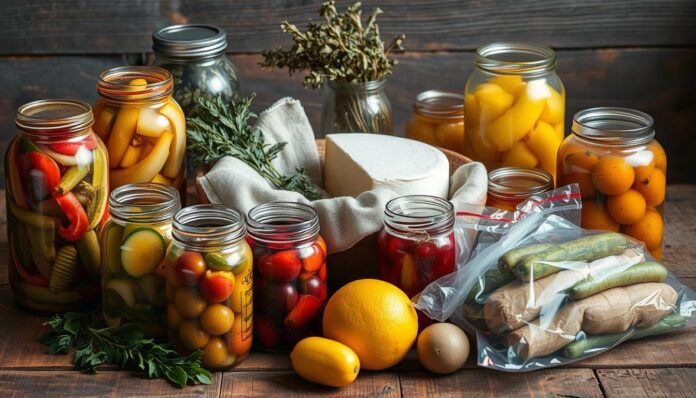Preserving food is a key skill. It helps keep food fresh longer, cuts down on waste, and ensures you always have healthy meals. We’ll look at five ways to do this at home: freezing, dehydration, canning, pickling, and fermentation.
Each method has its own perks. They help keep food’s taste and texture good. They also make your food more nutritious. This guide will help you learn how to preserve food well, whether for the long haul or just to keep your food fresh.
Understanding Food Preservation and Its Importance
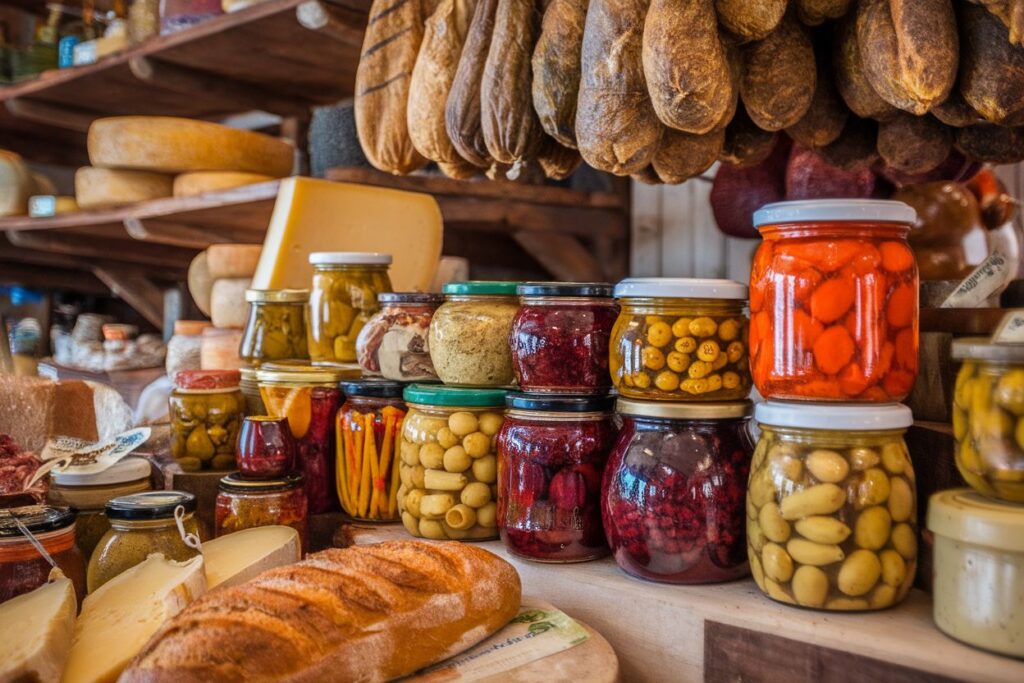
Food preservation has been key since ancient times. People have always found ways to keep food fresh longer. This has helped ensure food is available all year.
From the Egyptians’ salt and sun-drying to today’s canning and freezing, we’ve made great strides. Our history shows how important and creative we’ve been in keeping food safe.
Our ancestors first used drying, smoking, and salting to keep food fresh. As societies grew, so did their ways to preserve food. The Mesopotamians, Chinese, and Egyptians all found ways to store food for longer.
Today, preserving food at home has many benefits. It saves money, reduces waste, and keeps food fresh and nutritious. Families can enjoy fresh, healthy food all year by preserving seasonal produce.
Home food preservation is great, but safety is key. We must follow safe methods to avoid harmful bacteria. Following food safety rules, like proper canning and temperature control, is vital. This ensures our preserved food is safe and healthy.
Ways to Preserve Food Through Freezing Methods
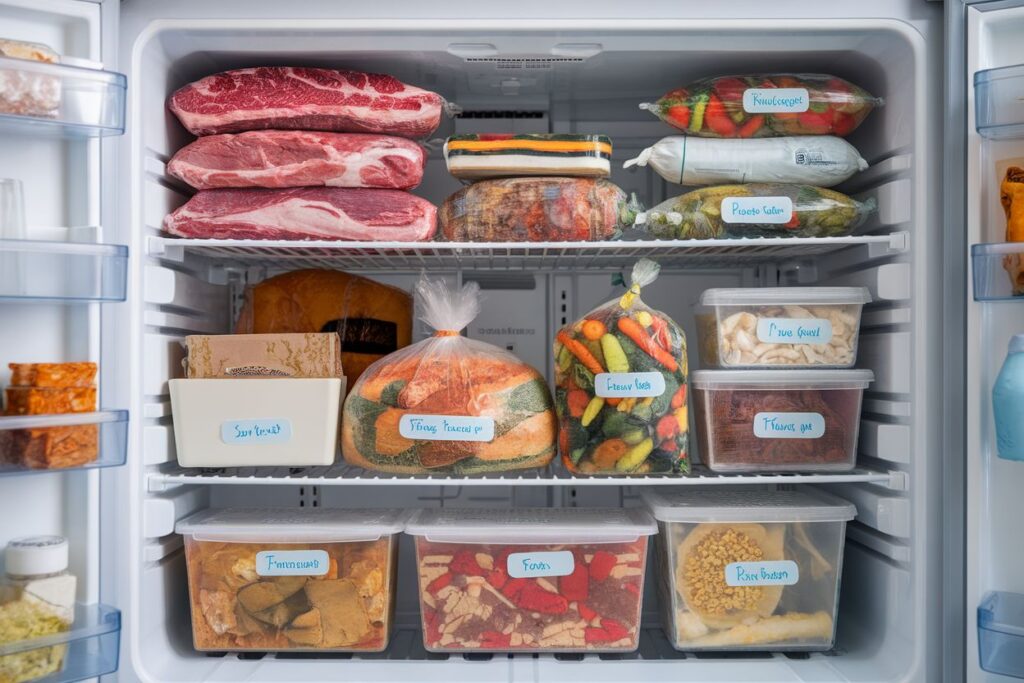
Freezing is a great way to keep your food fresh and good quality. It can make many foods last longer, like meats, veggies, baked goods, and leftovers. Learning how to freeze food well can cut down on waste and keep your kitchen full.
Flash freezing is key. It freezes food fast at very cold temperatures. This keeps the food’s taste, texture, and nutrients safe. Vacuum sealing is also good, as it gets rid of air and stops freezer burn.
Keeping the freezer at 0°F (-18°C) or colder is essential. Also, label and organize your frozen items well. This makes it easier to find what you need and use it when it’s best.
The right container or bag is important for freezing. Use ones that are airtight and won’t let moisture in. Stay away from plastic wrap and aluminum foil because they let air in. This can make your food lose its taste and texture.
Dehydration: A Traditional Preservation Technique
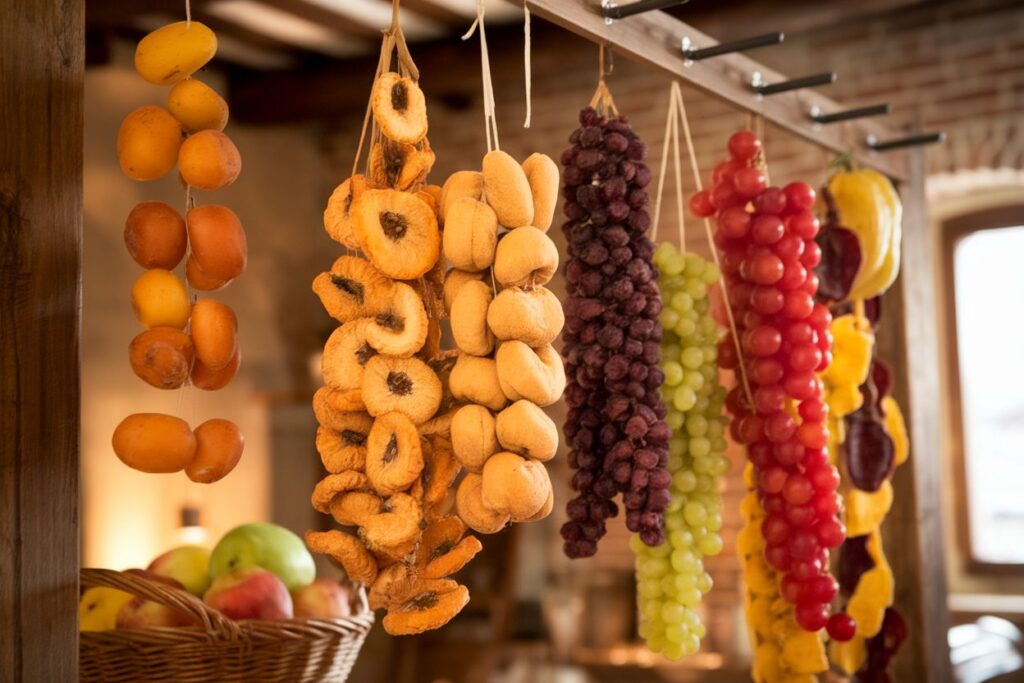
Food dehydration has been around for centuries. It’s a simple way to make tasty homemade dried foods. You can make everything from crunchy vegetable chips to soft fruit leather. By drying out the food, it lasts longer, which is great for storing food for a long time or in emergencies.
Some foods dry better than others. Fruits like apples, bananas, and berries work well. So do vegetables like tomatoes, peppers, and mushrooms. You can also dry herbs, spices, and lean meats.
To start dehydrating food, you need the right tools. A good dehydrator is key. It controls the heat and air flow for even drying. You can find dehydrators in many styles, from simple to advanced.
You’ll also need sharp knives, cutting boards, and containers for storing the dried food.
To dehydrate food well, follow a few steps. First, prepare your ingredients by cleaning and cutting them into uniform pieces. Put the food on the dehydrator trays in a single layer, leaving space for air to move.
Set the dehydrator to the right temperature, usually between 95°F and 135°F. Let it dry for a few hours or even days, depending on the food and how dry you want it. Check on it often and rotate the trays for even drying.
When it’s dry enough, let it cool down completely. Then, store it in airtight containers or bags.
Canning and Pickling Preservation Methods
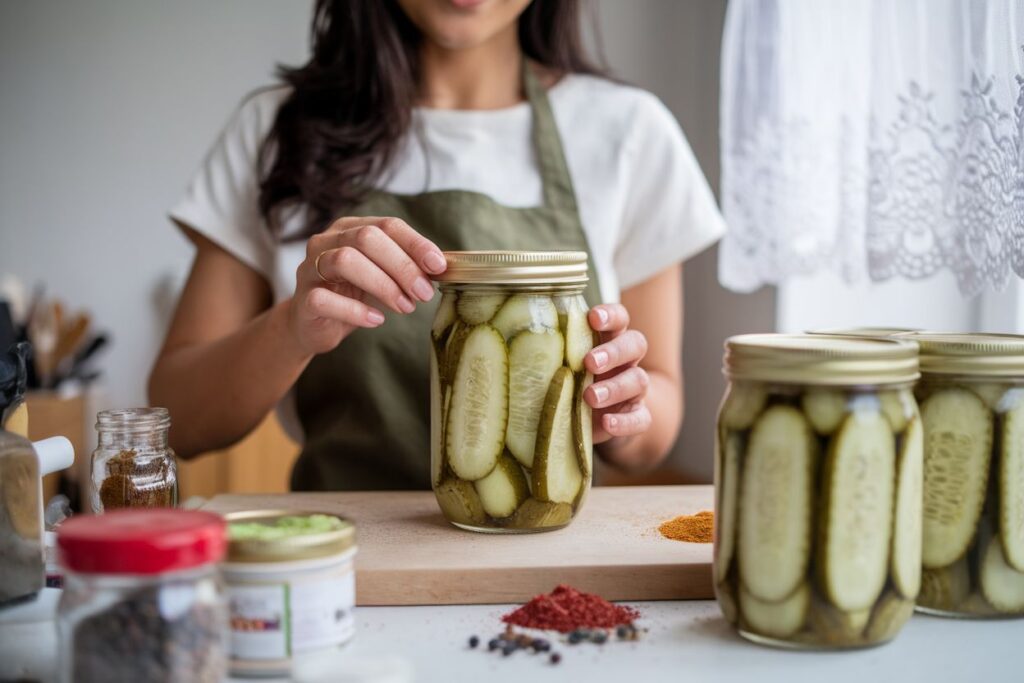
Canning and pickling are great ways to keep food fresh for a long time. They help cut down on food waste and let you enjoy seasonal flavors all year. These methods are easy and fun to use at home.
There are two main ways to can food at home: water bath canning and pressure canning. Water bath canning works best for foods high in acid, like fruits and pickles. Pressure canning is needed for foods low in acid, such as meats and vegetables. It’s important to follow safe practices, like cleaning jars well and using tested recipes, to keep your food safe and tasty.
Pickling uses vinegar, salt, and spices to keep foods fresh. You can make everything from classic dill pickles to spicy pickled peppers. Learning how to pickle opens up a world of tasty, healthy foods to enjoy all year.
Whether you’re just starting or have been canning for years, it’s a fun and rewarding hobby. With the right tools, knowledge, and safety steps, you can make delicious, long-lasting foods. Start exploring canning and pickling to enjoy the flavors of the seasons all year.
Fermentation: Natural Food Preservation
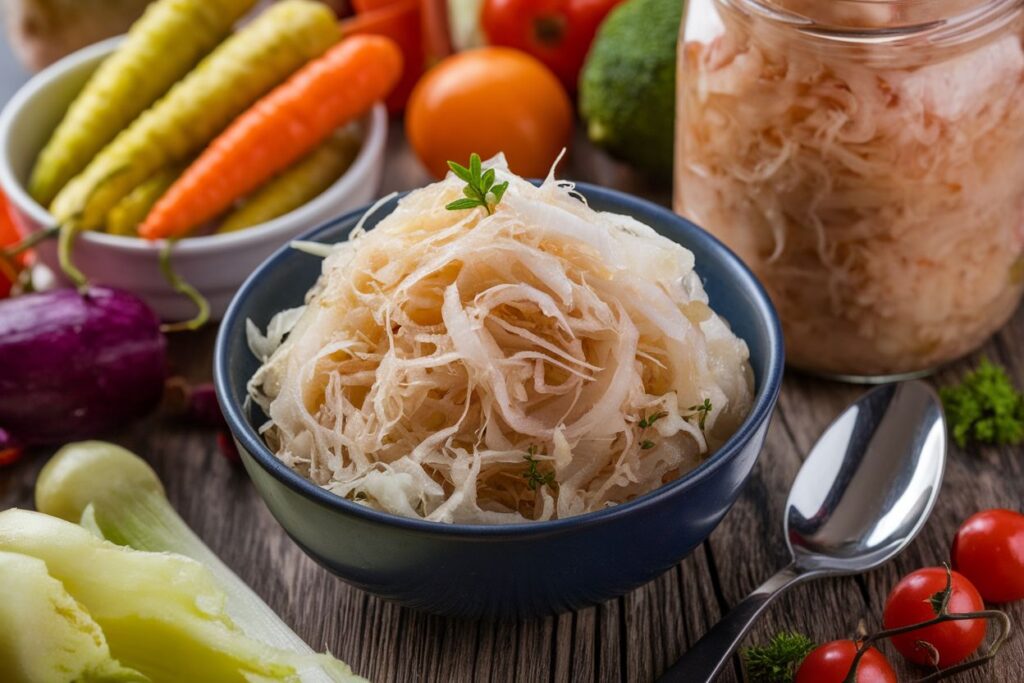
Fermentation is a natural way to keep food fresh and make it healthier. It’s been around for centuries, turning simple ingredients into tasty, probiotic-rich foods. Think sauerkraut and kombucha, both full of flavor and good for you.
Sauerkraut, made from cabbage, is a favorite for its tangy taste. Kimchi, a Korean dish, is known for its spicy kick. Yogurt, kefir, and cheeses also get their unique flavors from fermentation.
To ferment food well, you need a few key tools. Airtight jars or crocks keep the environment right for fermentation. Weights keep the food under brine, stopping oxygen from getting in. Keeping the area between 65-75°F helps the good bacteria grow.
Even with the right setup, problems can still happen. Mold, bad smells, and too much bubbling mean something’s off. Watch the temperature, check the brine, and stay clean to avoid these issues.
Final Thoughts
We’ve looked at the best ways to keep food fresh. These methods help you save money and enjoy healthy homemade meals all year. Freezing, fermentation, and more offer great benefits for your kitchen.
Looking to save food or enjoy fresh flavors? Using these food preservation tips opens up new cooking possibilities. You can make your kitchen a place for sustainable long-term food storage methods. This way, your pantry stays full of tasty, healthy foods.
As you work on sustainable food practices, remember a few key things. Understanding the science and following safety rules are crucial. With patience and creativity, you’ll make delicious, healthy foods that are good for you and taste great.


